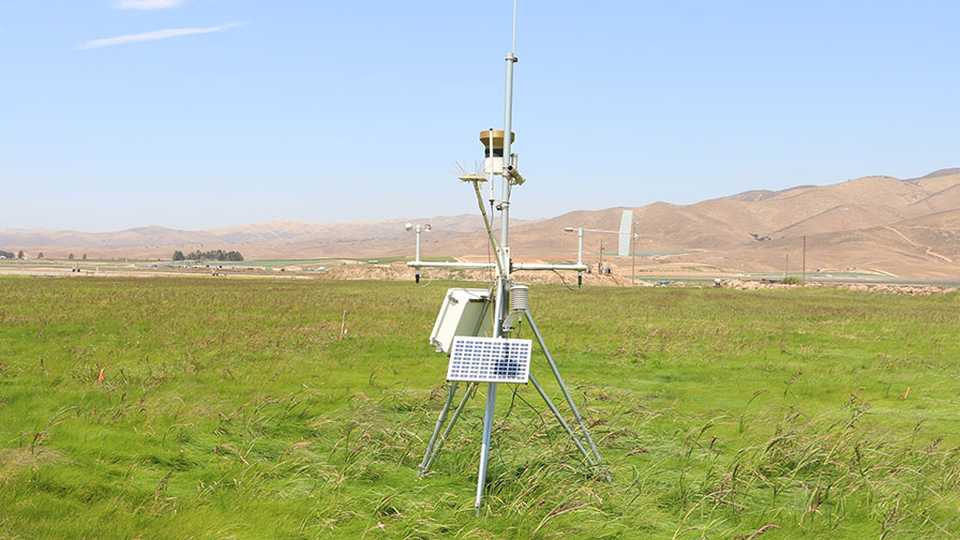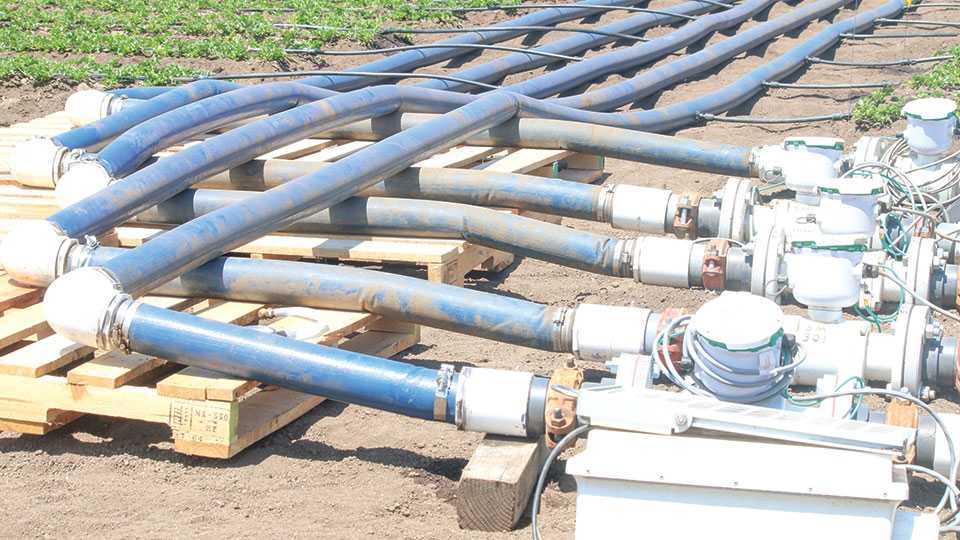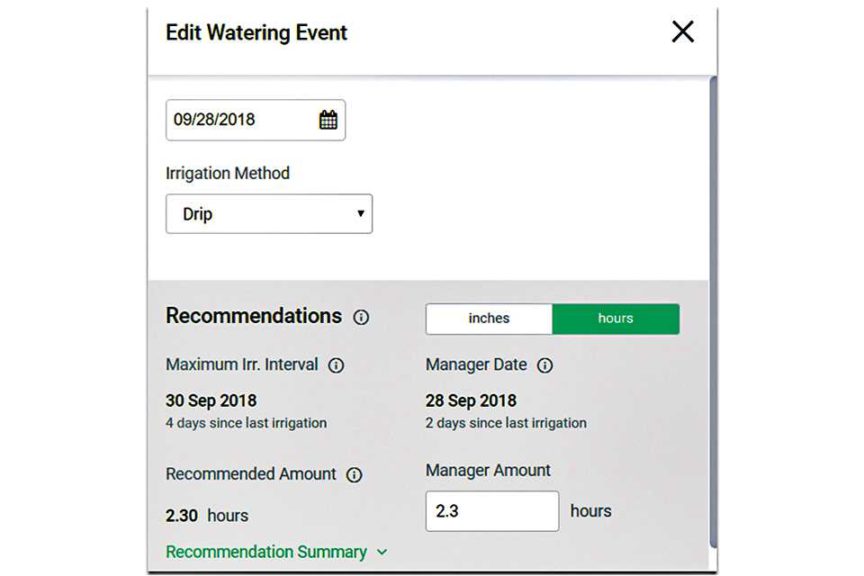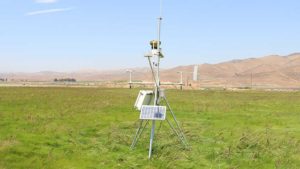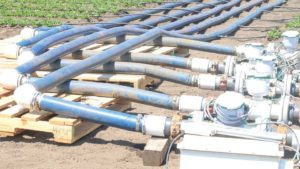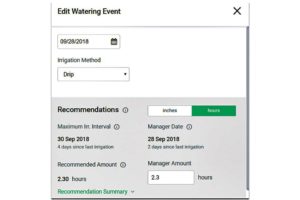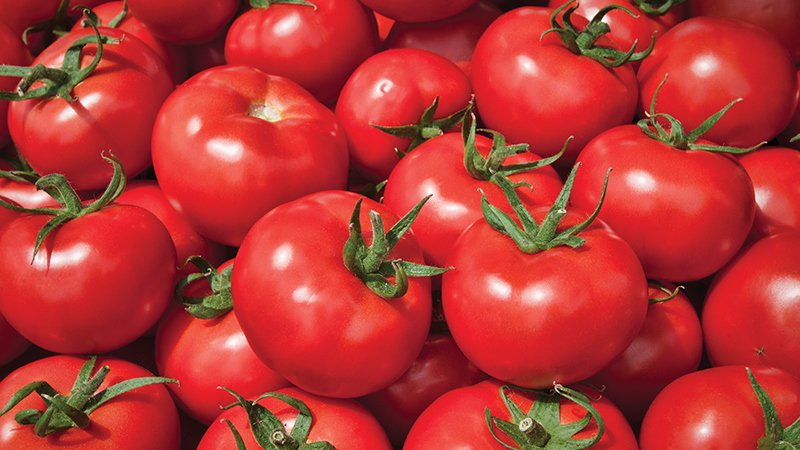How to Optimize Irrigation in Vegetable Fields With Weather Data
Celery is a challenging crop to produce due to its sensitivity to water stress. Plants may grow smaller in sandy areas of a field where the soil holds less moisture compared to areas where the soil has a higher clay content. Water management also can affect pith break-down, a physiological defect that causes spongy tissue to develop near the base of the petioles, reducing the marketability of the crop.
To attain a uniform plant size and avoid market defects, evidence suggests that many growers may over-irrigate.
Spoon Feed with Drip
On the central coast of California, the average amount of water reported for celery irrigation is 19 inches. And more than 35% of growers reported applying greater than 20 inches.
Though growers often use drip irrigation to minimize foliar diseases in celery, as the crop matures, they often supplement drip with sprinkler or flood irrigation to assure adequate soil moisture. Unfortunately, large applications of irrigation water can leach soil nitrate beneath the roots of celery, potentially compromising groundwater quality.
One way to achieve better control using drip is to irrigate frequently and apply the right amount of water to match crop demand.
You can do so by using easily accessible tools. First, monitor soil moisture to determine the crop’s water requirements. Then use weather data to estimate daily evapotranspiration (ET).
California and other western states have networks of weather stations that provide daily estimates of reference evapotranspiration. The California Irrigation Management Information System (CIMIS) consists of more than 150 stations located in most agricultural valleys throughout the state.
Making sense of all this data can be difficult. There are numerous variations in weather, which in turn has an impact on ET. And you must must adjust the data for crop type and growth stage using a crop coefficient.
Additionally, calculations must account for the uniformity and application rate of the irrigation system and salinity of the irrigation water. Considering that the average-size vegetable farm typically manages numerous small fields, it can be challenging to make all the calculations necessary for using ET data to guide each irrigation event.
Irrigation Software to the Rescue
During the past decade, University of California, Cooperative Extension has developed an online decision support tool that automates ET-based scheduling of irrigations for several vegetables, including celery.
The online software, known as CropManage, estimates the number of hours to irrigate using ET data from a nearby weather station combined with models of crop coefficients and root development (below right). The irrigation recommendation accounts for the application rate and uniformity of the irrigation system, as well as the interval between irrigations. In less than a few seconds, the software can automatically retrieve ET data from the closest CIMIS weather station and recommend the time to irrigate a crop.
The algorithms in CropManage are initially based on research published in peer-reviewed scientific journals. Nevertheless, it is important to evaluate if the decision support algorithms used in the software provide accurate recommendations in field settings.
One such approach used by our team involves comparing the software recommendations to the practices of several growers by running trials in commercial fields.
Additionally, we conduct field trials at a research station where we can evaluate yield and quality resulting from CropManage irrigation recommendations. Past trials conducted in lettuce and broccoli demonstrated that the decision support algorithms in CropManage optimized yield and quality.
Trials in cabbage showed that the algorithms in the software needed to be adjusted to optimize yield. Although there are published crop coefficients values for celery, few field trials have evaluated if ET based irrigation scheduling optimizes yield.
Latest Celery Study Results
In 2018, we began a study evaluating the use of ET-based irrigation scheduling using CropManage in drip-irrigated celery grown on a sandy loam soil.
The crop was transplanted in July and initially irrigated with sprinklers. After the transplants were established the field was converted to surface-placed drip tape and a manifold was used to impose five irrigation treatments on the celery crop in plots of sufficient size (135 ft × 17 ft) for a commercial harvest evaluation.
The irrigation treatments, randomly assigned to the plots and replicated six times in the field, were 50%, 75%, 100%, 125%, and 150% of crop ET as determined by CropManage.
Total seasonal water applied to the 100% ET treatment was 13.4 inches, of which 3.5 inches were applied using sprinklers during transplant establishment. The highest water treatment, 150% of ET, received a total of 19 inches of water during the season, which is about the average amount of water reported for growing celery on the central coast. Marketable yield of each plot was evaluated at 93 days after transplanting by a commercial harvesting crew in late October.
Trial Results Demonstrate Dramatic Improvements
Marketable fresh yield for the irrigation treatments ranged from 6.2 to 48 tons per acre with the highest yields in the 125% and 150% ET treatments. Although the 100% ET treatment had lower yield than the 125% and 150% treatments, it still produced more than 10% above the regional average of 33 tons/acre.
Dry matter yield of the marketable plants was similar among the 100%, 125%, 150% ET treatments but significantly less for the 50% and 75% treatments, which indicated that the main effect of irrigating more than the 100% ET treatment was to increase the water content of the petiole tissue.
The 125% and 150% ET treatments had the most plants in the largest size categories of 30 and 24 plants per box. Although the 150% ET treatment produced the highest yield, it also had the highest incidence of basal rot and pith. The percentage of applied nitrogen fertilizer taken up by the crop was similar among the 100%, 125%, and 150% ET treatments (approximately 70% of applied nitrogen), but lower for the 50% and 75% ET treatments. This result suggests that irrigating up to 150% of ET by drip may not increase nitrate fertilizer losses by leaching.
Although these trial results are from the first year of a two-year study, several preliminary conclusions can be drawn:
- Irrigating celery by drip can produce high yields and good quality without the need for supplemental irrigations. The key was to apply enough water to match crop ET demand.
- Celery can be produced successfully on sandy textured soils by irrigating more frequently. In our trial, irrigating three times per week minimized water stress in the 100%, 125%, and 150% treatments.
- Higher yields were obtained by applying more than 100% of crop ET. The 125% ET treatment seemed to provide the best balance of yield and quality.
- Applying more than 100% of ET seemed to be necessary to increase the water content of the crop.
In summary, the only way to really understand the water requirements of a vegetable crop is to conduct field trials that evaluate yield and quality under various irrigation regimes. For celery grown with drip, frequent irrigations and matching the water applications to 125% of estimated crop ET maximized yield and quality. After a second year, we will use the results to adjust the CropManage algorithms so that growers can confidently use ET-based irrigation scheduling to optimize water use.




